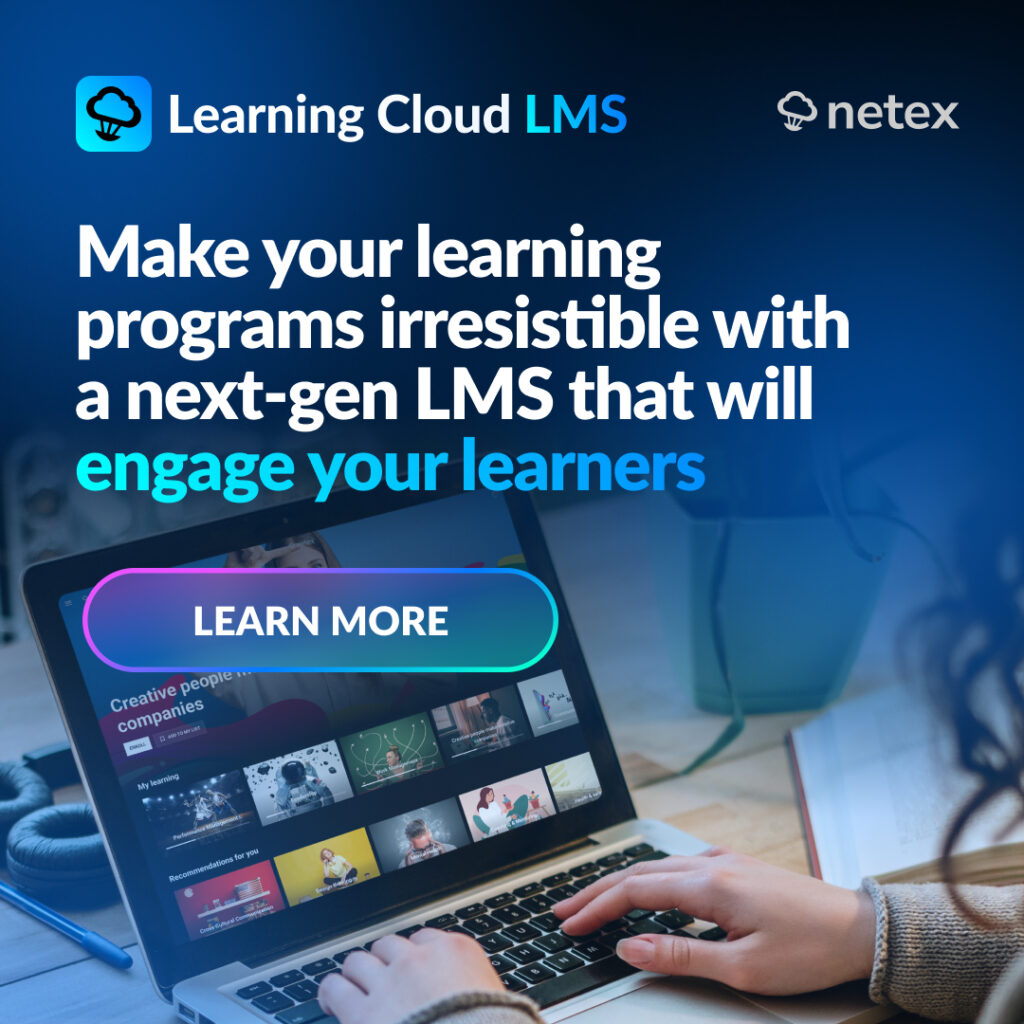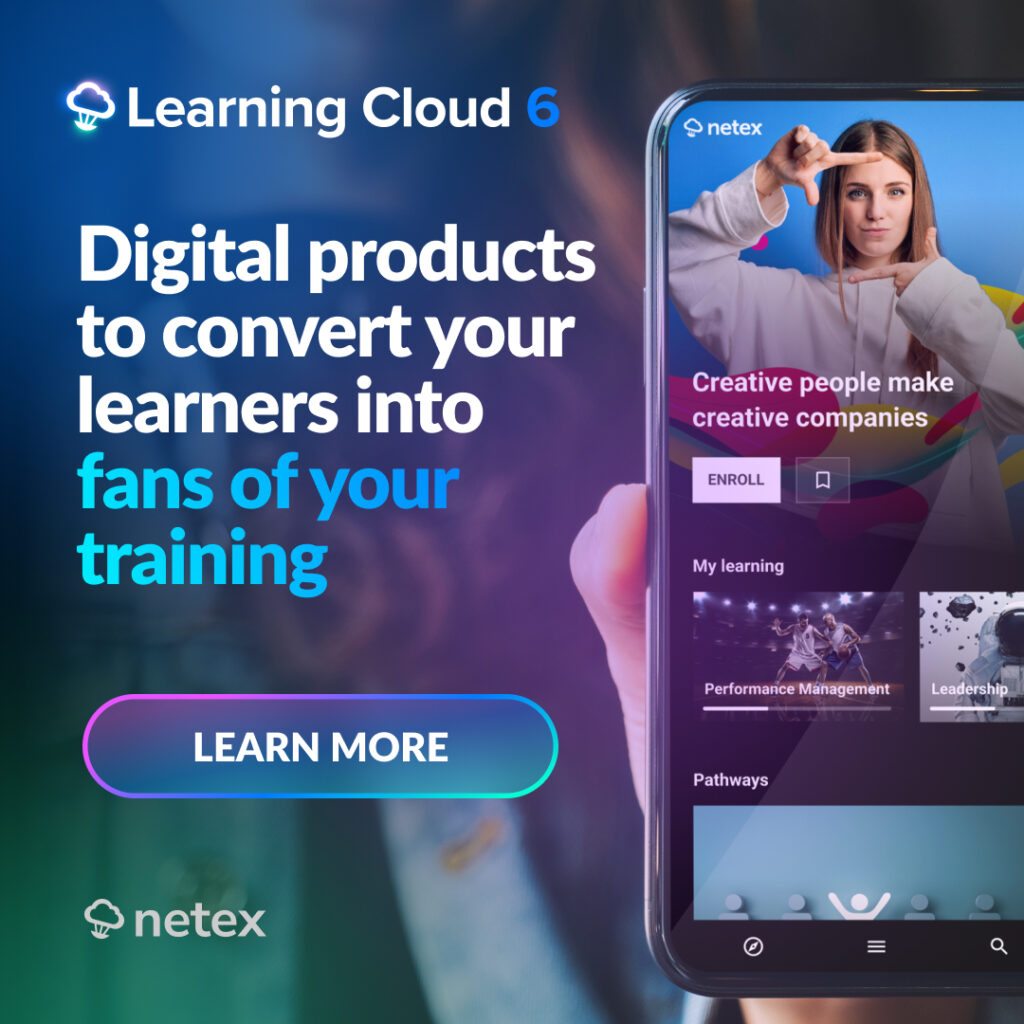Share
We know that the management of L&D in businesses is needed in these times of ever-accelerating change. In fact, we can see that learning is, more and more, becoming a strategic choice to help businesses adapt, to seem forward-thinking and modern. It’s acknowledged as a way to keep employees engaged and grow and develop as a whole.
Yet, despite these good intentions and investments into the best LMS systems, the expectations of these systems aren’t met, and the employees who are hoping to acquire knowledge still find themselves lacking.
So, what can we do? In this article, I will highlight some important factors you need to take into account when creating a Learning Ecosystem, factors that are focused around people-centred innovation. Focus on these and you will find that not only will the investment pay off, but it will also kick-start the growth mindset of employees and develop a culture that embraces change.

Create Learner Journeys
Not everyone likes learning. It’s a fact, and it is not at all surprising. Learning is still too often associated with school days where we were all sent down the same path like meek sheep. Yet even in education, this concept has already been superseded. No matter the place, learning should be a highly individual experience in which everyone follows their own path. Learning is therefore no longer a moment in our work or life, it is an ongoing journey where we want to acquire relevant knowledge when we need it, and preferably in a way that can be understood by us.
To many L&D specialists, this often seems a very complicated, time-consuming and, therefore, expensive issue that vendors of supposedly all-purpose LMS systems like to capitalise on. The picture they promise is that these AI-driven systems will ensure that employees are supported with adaptive learning paths fully driven by the system. A convenient sales pitch, yet there is a little more to it: if the system does not have the relevant knowledge of the employees, the magic will not happen and the LMS will be nothing but yet another content system. Only when we work from learner personas, prompted by knowledge about employees can AI go further with this data to create a truly relevant learning experience.
For example, think of young employees in retail who grew up on Instagram and absolutely love stories and quickly consumable content. Or engineers who want to understand all the details and are looking for accurate information, preferably from a trusted source such as a university. Their experiences of learning, the content they seek and the way they want to process this content, are significantly different. As L&D, we therefore need to map all these different personas before deciding which learning pathways to offer each employee.
If you have no idea how to get started with this, talk to your colleagues in marketing who have been using personas and neuroscience for years to get customers to modify their behaviour in a very specific way. They know how to persuade targeted audiences based on personas, whether that is for their own platform, or TikTok, Facebook or even through Google Ads that lead them to your own whitepapers. Innovative LMS systems that are fed with relevant employee data can be deployed as efficiently as the technologies marketers use. It will help the learning be lean, relevant, on-demand and measurable.
The visible problem is usually not the opportunity for improvement
Another common reason why implementations fail is that they address a problem that is not actually the priority, or which is a consequence of another problem. A common example is the problem of senior experts in an organisation not sharing valuable and useful information that they have in their heads – information that could be helpful to the organisation – so it gets lost with time. A simple solution which is often recommended, especially by savvy tech vendors, is technology. In this scenario, it would be technology which creates a learning community, where the senior experts can share their knowledge. But that is never enough. It doesn’t solve the problem. And why? Because it’s only focused on the visible part of the problem, it doesn’t explore or address the root cause of the problem.
It is therefore advisable to always take the time – maybe in specific problem-solving workshops – for a thorough root cause analysis of the visible problem by asking many ‘Why’ questions. The answer to ‘why don’t experts share their knowledge?’ is rarely ‘because they don’t have the technology’, instead it’s usually because they don’t see the added value for themselves and the organisation. These are the sorts of insights that come out of the workshops, and it is these – the root cause of what we see as the ’visible’ problem – which we should be applying design thinking to.
So, in the case of this expert knowledge which isn’t being shared, the solution would be nothing to do with technology. However, an opportunity can be found in other ways of working together, or maybe a campaign that highlights the importance of knowledge sharing, possibly stimulated by incentives or even gamification that suits the employees and the organisation. The real opportunity here – that actually tackles several problems – is continuous improvement of a learning culture that will also support other learning initiatives.
Stakeholder engagement
One of the most common reasons why innovation often does not give the desired results is because it does not take into account all the stakeholders involved, especially those who are afraid of change. Someone who doesn’t want to learn because they are afraid they won’t be able to do it or because they just can’t fit it into their work-life balance that is already under pressure will still not be won over by the most innovative and immersive experience.
Therefore, the best tip for implementing new initiatives, technology or simply working differently is to involve these employees in the design phase from the beginning. More so, invite them to the above-mentioned problem-solving workshops. Have these workshops at set times, each with a different focus or problem, and involve the employees who experience the problems first-hand, showing them how this problem is going to be addresses and solved. This will convince them to embrace this change. With this approach, you’ll tackle two huge benefits for organisations that want to grow through people-centred innovation and engaged employees. First, as an outsider and one who isn’t directly affected by the problem, you are showing you understand the basis of their anxiety and demonstrating how you can support them in this And second, when implemented, these employees will be the first to join in, and, as a result, become your ambassadors. And again, work with your marketing colleagues because their experience of activating brand ambassadors will teach you a lot as an L&D professional.
Leading Learners
The last but most common reason, but the easiest to address, has to do with senior leaders of the organisation. When was the last time the organisation’s leading executives logged into the system themselves? Every organisation is the shadow of its leaders, so leaders who don’t lead by example send the wrong message. They’re saying that learning is only for those who want to grow and develop in the organisation, and is no longer relevant when you make it to the highest echelons of the organisation.
Designating senior executives as ambassadors for learning and the organisation’s learning culture often pays off very quickly and really doesn’t have to be difficult. For example, executives can share their own lessons learned via a learning community or videos on an LMS system or microlearning platform. But they can also go further in encouraging a growth mindset that supports a learning culture. After all, an organisation benefits from employees with a growth mindset, as it will help them effectively build the skills and competencies needed to perform tasks.

Engaged employees who are not afraid of change and the future should be informed about the purpose and strategy of where the organisation wants to go, but more importantly why. They should have a say in this and feel safe to question or sharpen it. Studies don’t lie, organisations that grow with their employees share all the relevant information, which increases engagement for change and thus motivation to learn and keep learning. In these learning ecosystems, technology is deployed to ensure that relevant information and content is shared with those who benefit from it without being overwhelmed or distracted by, for example, the learning journeys cited earlier. And of course, again, there are benefits to breaking down silo thinking within the organisation by collaborating with expertise within communications.
If we take all these simple things into account before, during and after implementing new learning initiatives, we will see the organisation adopt the habit of continuous improvement and grow into a learning ecosystem.
Share

